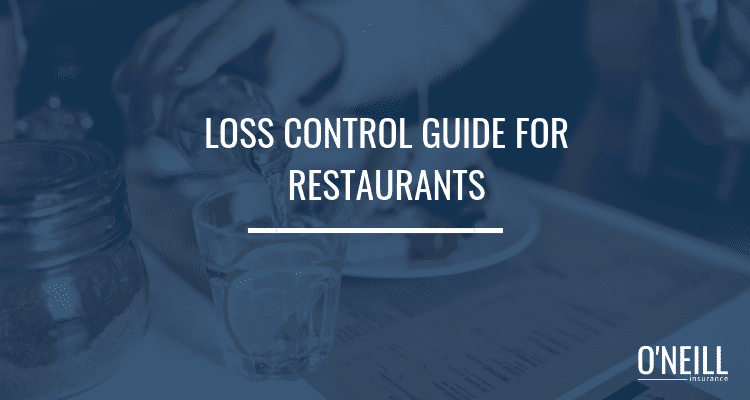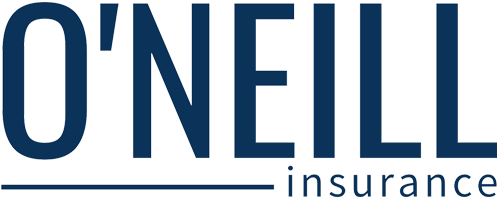
Those who run restaurants are often some of the most passionate business owners, investing time and money to deliver a high-quality experience to their customers.
However, the hospitality industry can be unforgiving, and it’s a constant challenge for owners to deliver exceptional food and service, maintain a customer base, and ensure a safe and healthy environment.
These challenges are magnified when you consider that restaurants often have a number of risks associated with them, and a variety of incidents can occur without warning – even with the proper safeguards in place.
Thankfully, taking the appropriate precautions and accessing your exposures on a risk-by-risk basis can go a long way toward protecting your investment.
Our restaurant loss control guide is designed to provide a summary of the major risks restaurant owners must address and include helpful strategies and materials they can use to reduce the exposures associated with their business. The guide provides in-depth checklists you can use to keep your restaurant secure, and your employees and patrons safe.
In addition, our restaurant loss control guide includes supplemental tools, such as sample policies and forms, to help manage your property more efficiently.
Download our Restaurant Loss Control Guide here:
{{cta(‘b5a49c44-1d22-4e06-972e-0a3c3a7ec9ba’)}}
This guide is not meant as a substitute for advice from a legal professional or a qualified insurance broker.
Managing Your Restaurant Loss Prevention Program
Many factors can come between you and the safety of your restaurant and patrons. An effective loss prevention program can help you manage these factors, saving you both time and money. Strong loss prevention programs for restaurants generally contain three components:
-
A restaurant management policy
-
Loss prevention and risk control strategies that address specific risks to your restaurant
-
Methods for soliciting and responding to unsafe conditions and repairs
However, these programs are considerably less effective without buy-in from your entire restaurant. These initiatives must be ingrained in the day-to-day operations and consist of more than just daily checks of your property.
As such, clear communication of your business’s policies and procedures are a must and should involve:
-
Input from those who helped develop your program
-
Feedback loops to determine the program’s effectiveness
The better you communicate your loss prevention program, the more likely your employees are to participate. To promote effective communication, ask yourself if you have:
-
Shared your safety goals with your employees
-
Educated employees on safety best practices and how to report property concerns
-
Communicated specific hazards to employees
Hazard Identification and Risk Control for your Restaurant
By implementing a system of hazard identification and risk control, you can prevent workplace injuries as well as property losses. There’s three basic steps:
-
Identify hazards – Consider every area of your workplace when looking for hazards. Think about conditions or work activities that could put your employees or guests at risk.
-
Assess the risks – Once you’ve identified a hazard, evaluate the risks associated with it. There’s two basic questions to ask when considering a hazard: How likely is an incident, and how serious would it be if it occurred? A risk assessment will help you prioritize the hazards so you know which ones to deal with first.
-
Control the risks – Once you’ve identified hazards and assessed the risks, look for ways to control them. The basic types of controls are elimination or substitution, engineering controls, administrative controls and personal protective equipment.
Incident Investigation at Your Restaurant
Even if you take every precaution necessary to ensure the safety of your employees and customers, injuries and other accidents may still occur. In the event that an individual is involved in an accident on your property, you must gather key details. Doing so not only helps you address safety concerns as they arise, but thorough reports and investigations can assist in legal defence of a claim and prevent future incidents.
In general, all incidents should be investigated, including incidents that result in injuries that need medical treatment, incidents that have the potential for serious injury and near-miss incidents. However, it should be noted that the federal government – through the Occupational Safety and Health Administration Act – determines what incidents must be recorded, what incidents must be reported and how these incidents must be reported.
To determine what laws apply to you, it’s important to consult local and federal occupation and health safety legislation.
While the accident investigation process may differ from business to business, it’s critical that you:
-
Obtain information from the injured individual, including how and where the accident occurred
-
Do not take responsibility or place blame
-
Survey the conditions of the area at the time of the accident, taking photos if possible
-
Determine what equipment, activities or property were involved, noting the condition of these items (preserve the condition of any equipment and property involved in an incident if doing so does not present a hazard for others)
-
Implement corrective measures and follow up with employees to make sure the conditions that caused the incident are being corrected
-
Obtain information from witnesses when available
-
Analyze the information and determine root causes (e.g., worn carpet, faulty handrails or damaged surface in parking lot)
-
Report the incident to the proper authorities when applicable
-
Communicate any corrective action you take to your staff
-
Encourage your employees to provide ideas for preventing similar accidents
Throughout the investigation, clear communication between the accident victim and your business is paramount. You may also want to follow up on any and all incidents that occur on your premises and notify employees if safety procedures change.
For loss control checklists for specific liabilities, along with supplemental policy templates and samples, download our Loss Control Guide for Restaurants.
{{cta(‘b5a49c44-1d22-4e06-972e-0a3c3a7ec9ba’)}}
Risk Management and Insurance for your Restaurant
Interested in receiving more Risk Management tips for your restaurant? My name is Pat O’Neill and I’m a food and agribusiness specialist at O’Neill Insurance, a risk management and insurance firm in Wadsworth, Ohio. We offer food businesses across the nation tailored risk management strategies that not only provides safe practices for their restaurant, but also may help reduce their insurance premiums.
For more information, call me at (330) 331-7960 or email me at ptoneill@oneillinsurance.com.
{{cta(’22f11e76-6328-4c70-b839-5fa1fbfbd94e’)}}
Components of this article were adapted from Zywave. This is not intended to be exhaustive nor should any discussion or opinions be construed as legal advice. Readers should contact legal counsel or an insurance professional for appropriate advice.

